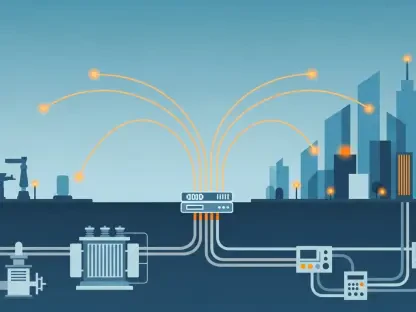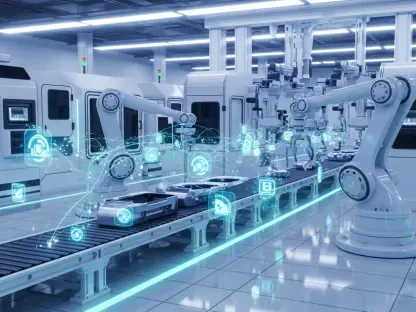In the heart of Maharashtra, a remarkable transformation has unfolded over the past decade, positioning India as a formidable player in the global aerospace industry, with the GE Aerospace facility in Pune leading the charge. Established in 2015, this site has evolved from a modest manufacturing hub into a globally recognized Center of Excellence, producing critical components for some of the world’s most advanced aircraft engines. With over 5,000 associates trained in precision manufacturing, this hub not only exemplifies cutting-edge technology but also addresses a pressing challenge: the acute shortage of skilled talent in a highly specialized sector. This guide explores the best practices that have fueled this success, offering actionable insights for industries aiming to balance technological innovation with human capital development in emerging markets.
The Significance of Precision and People in Aerospace
Precision manufacturing stands as the backbone of the aerospace industry, where even the smallest deviation in components like engine manifolds or fuel tubes can compromise safety and performance. At the Pune facility, stringent quality standards ensure that every piece meets global benchmarks, a non-negotiable requirement when dealing with parts for engines such as CFM’s LEAP and GE9X. This unrelenting focus on accuracy underscores why precision is not just a goal but a fundamental necessity in this field.
Equally critical is the investment in human capital, a strategy that has proven transformative for GE Aerospace in Pune. When operations began, the local region lacked a robust aero-engine ecosystem, making it difficult to source skilled workers capable of meeting tight tolerances. By prioritizing talent development, the facility has not only bridged this gap but also enhanced India’s global competitiveness, improved operational efficiency, and uplifted surrounding communities through sustainable employment opportunities.
The dual emphasis on precision and people offers a powerful lesson for other industries. Building a skilled workforce alongside advanced manufacturing capabilities creates a virtuous cycle of innovation and growth. This approach ensures that technical excellence is matched by a committed, capable team, setting a foundation for long-term success in high-stakes sectors.
Key Pillars of Success at GE Aerospace Pune
The growth of the Pune facility into a benchmark for aerospace manufacturing rests on several core strategies that can serve as best practices for similar operations. These pillars encompass talent cultivation, uncompromising quality, employee empowerment, and contributions to the broader industrial ecosystem. Each element is backed by tangible outcomes from the facility’s journey, providing a roadmap for others to emulate.
These strategies are not isolated efforts but interconnected components of a holistic model. By integrating technological advancements with a human-centric focus, the facility has achieved operational excellence while fostering personal and professional growth. The following sections delve into each pillar, offering detailed insights and real-world examples of their impact.
Talent Development: Building Skills from the Ground Up
Addressing the initial scarcity of skilled labor required a proactive approach, and GE Aerospace responded by creating a comprehensive in-house training ecosystem. Programs such as apprenticeships and the dedicated Weld School have been instrumental in equipping workers with specialized skills. Over 5,000 associates have been trained since operations began, with a strong emphasis on multi-skilling to ensure versatility and adaptability in a dynamic industry.
This training framework goes beyond technical instruction, focusing on long-term career progression. Employees are provided with opportunities to expand their expertise across multiple domains, preparing them for evolving challenges. Such a strategy not only fills immediate skill gaps but also builds a resilient workforce capable of driving future innovation.
Real-Life Impact: Ruksar Mulani’s Journey
A compelling example of this commitment to talent development is the story of Ruksar Mulani, who joined as an apprentice and rose to a leadership position with three promotions over eleven years. Supported by company-sponsored education programs and amenities like on-site childcare, Mulani’s journey highlights how structured training and a supportive environment can transform individual lives. Her success reflects the broader potential for employees, especially those from rural backgrounds, to thrive in high-tech industries when given the right tools and encouragement.
Precision and Quality: Non-Negotiable Standards
In aerospace manufacturing, safety and quality are paramount, and the Pune facility adheres to the highest global standards in producing critical components for engines powering aircraft worldwide. Every process, from design to delivery, is governed by rigorous protocols to ensure that parts like fuel tubes and manifolds perform flawlessly under extreme conditions. This dedication to precision is a cornerstone of the facility’s reputation as a Center of Excellence.
To maintain such exacting standards, advanced tools play a pivotal role. Welding simulators, for instance, allow trainees to perfect their techniques in a controlled environment, minimizing errors and material waste. This blend of strict oversight and innovative training methods ensures consistent output that meets customer expectations without compromise.
Case Study: Welding Simulators in Action
The implementation of state-of-the-art welding simulators offers a practical illustration of how technology enhances precision. These tools enable apprentices to master complex skills before handling actual hardware, reducing the risk of costly mistakes during production. By simulating real-world scenarios, the facility ensures that every worker achieves a high level of accuracy, contributing to overall quality and efficiency in manufacturing processes.
Employee Empowerment: Fostering Ownership and Innovation
A distinctive feature of the Pune operation is its self-managed team model, which departs from traditional hierarchical structures. Employees are guided by coaches and mentors, fostering a culture of accountability across key areas such as safety, quality, delivery, and cost. This empowerment encourages individuals to take ownership of their work, driving both personal initiative and collective performance.
Such a structure nurtures innovation by giving teams the autonomy to tackle complex challenges directly. Workers are not just executors of tasks but active contributors to problem-solving and process improvement. This approach has proven instrumental in sustaining high operational standards while cultivating a sense of purpose among the workforce.
Example: High-Performance Teams Driving Results
The impact of empowered teams is evident in the facility’s recognition as a global leader in aerospace manufacturing. Employees have taken ownership of intricate projects, delivering results that align with stringent industry demands. This model of high-performance collaboration has enabled the plant to consistently exceed expectations, demonstrating how fostering accountability at every level can yield exceptional outcomes.
Contributing to India’s Aerospace Ecosystem
Beyond its internal achievements, the Pune facility plays a vital role in elevating India’s status as a hub for high-value aerospace manufacturing. By developing local capacity for precision components, it has reduced reliance on foreign supply chains while meeting global demand. This strategic focus positions the country as a competitive player in an industry traditionally dominated by established markets.
Initiatives such as campus outreach programs and the introduction of metal-joining simulators in educational institutions further expand this impact. These efforts aim to identify and nurture talent at an early stage, creating a pipeline of skilled professionals ready to enter the sector. Such forward-thinking measures ensure a steady supply of expertise to support ongoing growth.
Broader Impact: Strengthening Maharashtra’s Industrial Landscape
The facility’s success has also catalyzed development in Maharashtra’s industrial sector, creating ripple effects for local suppliers and related businesses. As a key player in the region’s aerospace ecosystem, it has spurred economic activity and job creation, enhancing the area’s reputation as a center for advanced manufacturing. This broader contribution underscores the potential for industrial hubs to drive regional prosperity through targeted investment and collaboration.
A Model for Industry and Inspiration
Reflecting on the journey of GE Aerospace in Pune, it becomes clear that the fusion of precision engineering and human empowerment has forged a benchmark for industrial achievement. The facility’s evolution into a Center of Excellence demonstrates how strategic investments in talent and technology can overcome significant challenges like skill shortages. Each pillar of success, from rigorous training to employee ownership, contributes to a legacy of excellence that reshapes perceptions of India’s capabilities in aerospace.
Looking ahead, industries across sectors can draw valuable lessons from this model by prioritizing workforce development alongside technological advancement. A practical next step involves assessing local talent gaps and designing tailored training programs to address them, much like the apprenticeship initiatives in Pune. Additionally, adopting empowerment models that encourage accountability can unlock untapped potential within teams, fostering innovation and efficiency.
For companies eyeing sustainable growth in emerging markets, integrating these practices offers a pathway to long-term viability. Balancing cutting-edge tools with a commitment to community upliftment ensures not just operational success but also a lasting positive impact. This approach, proven effective in Maharashtra, stands as a guiding framework for building resilient, future-ready enterprises.









